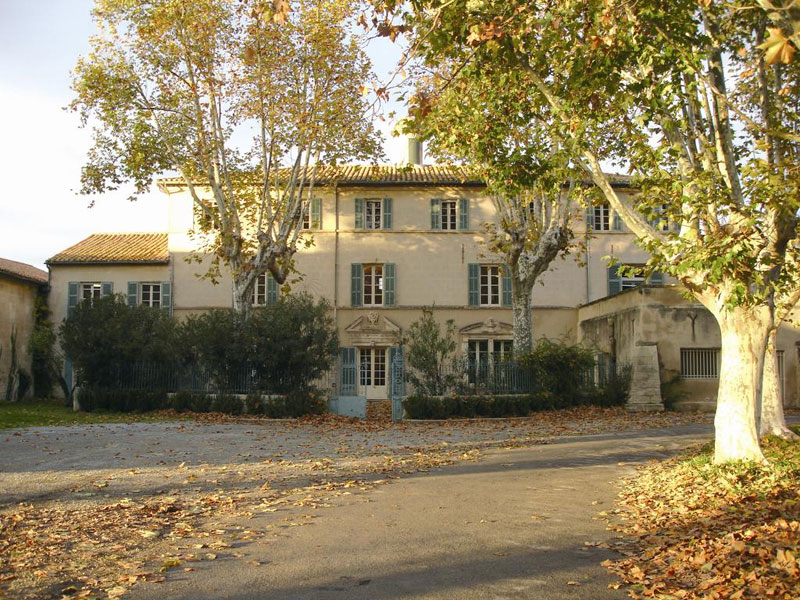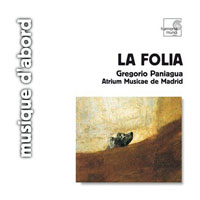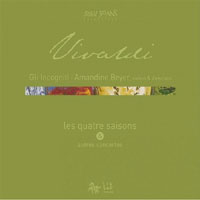Harmonia Mundi: One to Cherish
read the streets of most decent-sized French cities and sooner or later you’ll come across a Harmonia Mundi (HM) shop -- which could come as quite a shock, especially if you are used to watching the High Street music retailers (Tower, Virgin, HMV) disappear one by one. What I’m talking about here is a shop (one of 41 branches), often positioned in a prime retail location, dedicated to selling CDs -- and not just CDs in a world that’s staring into an onrushing tidal wave of downloadable music, but CDs of music that is, for the most part, drawn from just a single record label, specializing in the outer reaches of the classical, baroque and early-music repertoire as well as some pretty fringe jazz.
Okay, so France was an enthusiastic early adopter of CD technology. For every Harmonia Mundi outlet, scratch two used record stores from your expectations; in fact, used records are almost non-existent in France. But even that doesn’t account for this apparent refusal to accept the inevitable march of progress and the virtual world. Most record companies are struggling to survive, dumbing down material to an almost puerile level while grappling with the challenge of monetizing downloadable music. Which leaves me wondering, what other factors have come into play, accounting for the rude health of a business that seems to defy both social and artistic imperatives? Let’s start with the record label itself. Harmonia Mundi has a long and distinguished history. With a broad-based interest in book and music publishing (manuscripts) as well as recording, it is perhaps the prototypical example of an art-house publisher, covering (and in many cases combining) the various aspects of music and the visual arts. With a legacy of recorded music stretching back over fifty years, the company has been both an innovator and a driver, becoming a powerhouse in the reemergence of the baroque and early-music movements, before spreading its wings wider still to encompass the broader classical, romantic and world-music repertoires through its own recordings and as a distributor. With a catalog running 200 pages and well over 1000 titles, it’s not hard to see where the stock in all those retail outlets comes from. Add in French distribution responsibilities for another 40-plus labels (including the likes of Calliope, Radio France and Real World) and you can see how the retail outlets start to make sense.
Of course, quantity alone is not enough, and what really sets Harmonia Mundi apart is their consistent quality, both artistic and sonic. Specializing so effectively and their international presence help the cause, allowing them to attract leading performers in the various niche markets that they’ve served (and promoted) so successfully and imaginatively. But even that would count for nothing without their sensitivity to often unusual material and a penchant for creating exceptionally natural and dramatic recordings -- dramatic enough indeed to feature on Harry Pearson’s (in)famous list of recommended recordings. So, take a shop full of sonically excellent CDs and SACDs, with material that is spread across a wide range of exciting and unusual genres, add a switched-on public with a proven and abiding interest in and culture that supports both classical music and musical innovation, along with an interested and knowledgeable staff and you can see how the recipe would work. For anybody with an interest in audio and an open mind as regards material, Harmonia Mundi shops are a goldmine, full of magical nuggets waiting to be discovered, peopled with helpers who are only too happy to lend you a shovel, hold your coat and even take a turn with the tools. What’s not to like? But my most recent visit, during a few days spent in Rennes, was driven by something far more specific: a lurking memory from deep in my hi-fi history. Many years ago, I read a review in the UK mag Hi-Fi Answers of a Harmonia Mundi recording of the Vivaldi Four Seasons performed by Le Petit Bande, one of the earliest of early-music groups, wed to the concept of original instruments. I’d looked long and hard for a copy of the LP but never found one. As soon as I saw the familiar frontage across the street, that memory bubbled to the surface, and I found myself wondering whether the recording had, in turn, found its way onto the HM budget label, Musique d’Abord. Sadly not, as it turned out, but the helpful young assistant pointed me in the direction of what he considered an interesting alternative from the (new to me) Zig-Zag Territoires label -- featuring Amandine Beyer directing the Gli Incogniti. He wasn’t wrong, which is a long way round to reach what prompted this article. A great shop, full of great music and with great advice thrown in -- I’ll just nip out to my local branch. Except that I don’t happen to live in France, nor -- probably -- do you. Which might well leave you wondering whether this article is just some kind of cruel joke, except that Harmonia Mundi’s excellent website includes a fabulous catalog with fully interactive browse-and-buy facilities. Okay, so you don’t get the one-on-one advice, but neither do you have to leave your own home, and with HM’s well-deserved reputation for sonic excellence, the hardest question is, where to start? I can’t believe that once launched on a trawl through that catalog, you won’t find one disc -- then another and another -- that tickle your fancy; but just in case, here’s a few suggested starting points, including that Four Seasons, even if you can’t get it directly through the HM catalog. It fits the ethos of the whole operation so perfectly it’s a shame to miss it out -- and it too is available online. Alternatively, you could just jump straight in at www.harmoniamundi.com. As well as everything on offer from HM, it also provides links to all the other labels it distributes in its home market. Or I guess you could book a ticket to France to appreciate the full effect. Rennes has some really rather excellent restaurants too, but that’s another story altogether.
La Folia is one of Harmonia Mundi’s best-known recordings, but I make no apologies for including it here in its budget-label Musique d’Abord version, partly because it encapsulates so perfectly exactly what the best of HM is all about, and partly because this version easily betters my original, full-price CD issue (although neither approaches the sonic spectacular that is the LP). The Folia (or Madness) was an ancient and long-lost Spanish dance form, here reconstituted from surviving fragments by the ever-inventive Gregorio Paniagua -- with a little help from Henry Mancini, a lawnmower and sundry other unexpected interspersions. In keeping with the riotous abandon of the original, starting slow and accelerating with sudden, sharp shifts in tempo, Atrium Musicae take full advantage of the latitude on offer, drafting in almost anything that comes to hand to augment the various stringed instruments, flute, drums and sundry percussion instruments. The six musicians play no fewer than 21 different instruments at various times -- and that doesn’t count the extra-curricular contributions. If that all sounds like organized chaos, you’d be right; but "highly organized" would be even closer. There’s nothing slap-dash or gratuitous about the playing here, and the music that results is a model of rhythmic precision and sparse-yet-captivating melodic phrasing. Like all the best dance music, this is infectious, with jaunty, catchy and dynamic passages that constantly encourage and surprise the listener. La Folia is a voyage of musical discovery that constantly opens new vistas before you, which, whilst its ancient roots are clear to hear, is also somehow unmistakably modern. If only most electro-pop were as thoughtful, clever and engaging as this. As fresh and vibrant as the first time I heard it, La Folia offers the perfect introduction to Harmonia Mundi and is that rarest of animals: a recording that combines great music with spectacular sound. As a budget offering, this has to be one of the all-time bargains, its quality born out by the many audiophile versions that have appeared over the years. You might want to hunt those out later, but this is definitely the place to start. Just be prepared to expect the unexpected.
And now for something a little more modern, in terms of both recording and repertoire. This 2005 recording is drawn from the very heart of the romantic body, coupling two of Dvorak’s most eloquent works, the Cello Concerto and "Dumky" Trio. Both are justifiably popular and consequently heavily recorded, but this is another welcome addition to the musical canon. With competition from Starker and Piatigorsky, Queyras is going to have to come up with something spectacular to justify his inclusion, and here it is in the quieter, more reflective passages of the Concerto that he delivers. His playing in the second movement is a sensitive and poised tour de force, wringing every last drop of expression from the adagio. He might not match the sheer intensity of Starker (on Mercury) or the lyrical quality of Piatigorsky (on RCA), but really hearing those means shelling out for original vinyl in good condition. This Harmonia Mundi CD beats any of the other CD issues I’ve heard on sonic grounds, and the support from Belohlavek and the Prague Philharmonic is top-notch: tight, dramatic and dynamic, yet measured where required. Their tempos are quick and incisive, their phrasing a perfect foil to Queyras’ deft touch. The soundstage is reasonably wide, with plenty of depth, the solo instrument perfectly located and scaled, without the over-voicing that bedevils so many modern recordings. All in all, this is a great example of modern recording. It lacks the acoustic space and some of the atmosphere that you get from those early stereo recordings, but the solid presence of the orchestra and the emphatic dynamics more than make up for that. More importantly, the performance is more, much more, than just another addition to the catalog, with HM managing to capture that sense of fluid continuity and emotional energy that characterizes live concerts. This is no cut-and-shut exercise in note-perfect execution, but a genuinely successful attempt to encompass the broad emotional sweep of this most emotive of works. I love the Starker, but these days I find myself listening to this just as often, especially when a digital source is called for. The other thing that separates this from the historical competition is the inclusion of the "Dumky" Trio in addition to the Concerto, and very welcome it is too, the three players making the most of the sudden contrasts in tone and pace that characterize the piece. Their range of dynamic expression is superb, whilst again the fluid-yet-explicit phrasing, led by Queyras, brings much-needed structure to what can be a confused and confusing piece in the wrong hands. The ensemble's understanding is excellent, and there’s a real sense of conversation in the playing of this performance, a rendition that really looks deeply into the light and shade of the music.
Why do we need another review of a Four Seasons disc? Indeed, why do we need another Four Seasons disc? And why, in an article about Harmonia Mundi, is there a review of a disc from another label entirely? All valid questions -- but questions that are answered emphatically once you hear this recording. Not only are the familiar Four Seasons concertos played with a refreshing energy and vigor, there’s a streak of inventiveness in the interpretation, a real concern with the naturalistic sounds that Vivaldi was echoing -- flies buzzing, dogs barking -- that gives them a new twist, a new voice. The composer appended short poems to each of the four concertos, and Gli Incogniti draw directly on these with spectacular results. Tempi are quick and the playing precise, but never at the expense of phrasing; in fact, almost the opposite, with the structure and shape of each piece given even greater clarity. The small ensemble -- only eight players -- is grouped tightly, which gives the recording tremendous presence, underpinning the verve and energy in the playing, but it does lack the width and space that some audiophiles crave. Take a look at the photo on the back of the sleeve and you’ll see just how accurate the perspective is, as well as how appropriate to the performance. The other three concertos included here are far more than make-weights. Never before recorded, and in one case only unearthed shortly before the recording sessions took place, they offer a fascinating insight into the context and creative process of the Seasons. RV 390 and 372 are late works that carry clear thematic and structural echoes of the Four Seasons, but the latter, written for one of Vivaldi’s most gifted students, is a gem in its own right. RV 578a is an early, previously unpublished draft of the second concerto in the Armorico cycle from which the Seasons are drawn. Comparison with the final version is fascinating, especially when it comes to the edits and additions intended to tailor the work to its final audience. Whether they constitute improvements is for you to decide, but there’s no escaping the freshness and lightness of touch that illuminate this early draft. Overall, the sonic quality of this recording might not
rival HM’s best, but the musical approach and the style and energy of the performance
fit right in. Gli Ingogniti play with such emphatic purpose and belief that they breathe
refreshing new life into even this most familiar of works. |


 La Folia
La Folia Dvorak • Cello Concerto and
"Dumky" Trio
Dvorak • Cello Concerto and
"Dumky" Trio Vivaldi
• The Four Seasons and Other Concertos
Vivaldi
• The Four Seasons and Other Concertos